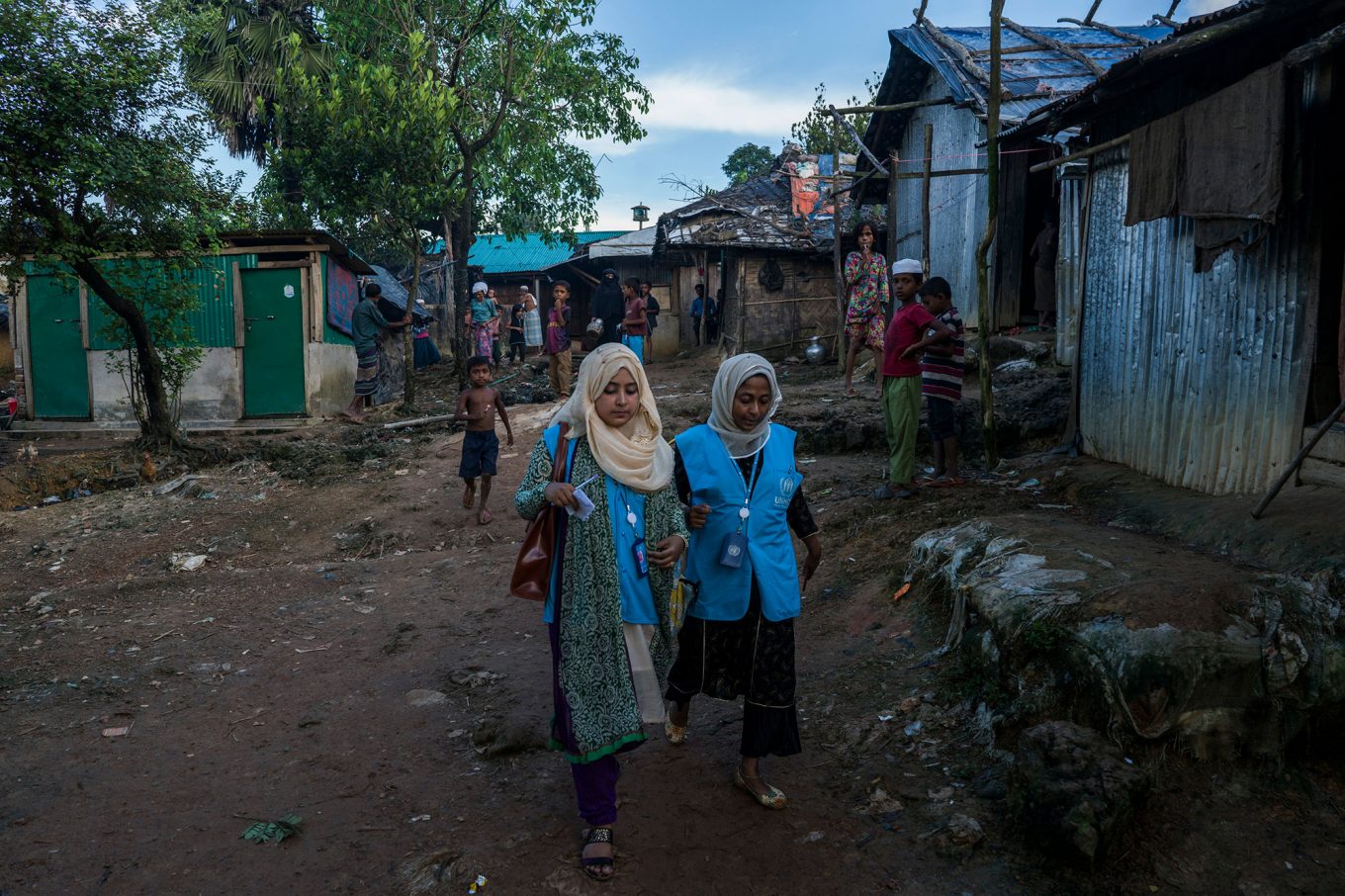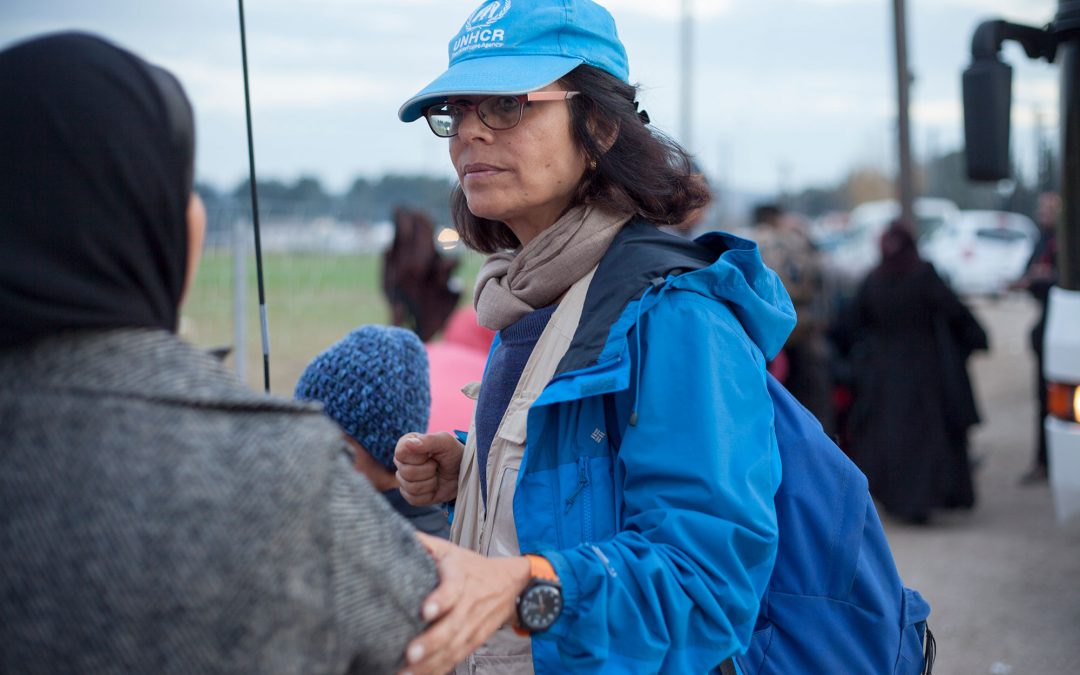The ‘UNHCR Innovation Women Video Series’ highlights unique perspectives and challenges of women in UNHCR. They offer their experiences on what it can be like being a woman in the humanitarian field, lessons learned, stories from their careers, insights on humanitarian innovation, and simple actions we can take to bring more equity into the workplace.
“Being a woman in this field has both its advantages and its challenges. I know that there have been so many achievements in terms of gender parity and making sure we’re aware – not only for refugees and beneficiaries but also for the staff. But I think we still have quite a far way to go,” says Joung-ah, UNHCR’s Emergency Response Coordinator.
Why innovation and women?
Our experience is that innovation is often associated with technology, and technology often associated with men. The Innovation Service and its partners have worked in innovation collectively for years, across different sectors and locations, and we all recognise that innovation is not only about technology and certainly not about men. Technology alone will never be enough for humanitarian innovation – we need collaboration and cross-disciplinary fertilization that enables new ideas and ways of thinking.
In 2016, only 25% of the people who applied to the Innovation Fellowship were women – a percentage that does not reflect the diversity or reality of our organisation. Did people also think humanitarian innovation was also only about men? Were we as a team missing something? This was one of the assumptions we wanted to test through this series, using the innovation process to answer questions we had about our own organisation.
For UNHCR to move forward and address the challenges of the twenty-first century we have to innovate and to innovate we have to collaborate, and we want to ensure that women’s voices are a part of that conversation and process.
As we began asking our colleagues questions around these issues, we also realised that this was an opportunity to not only talk about women and innovation but the role of women in UNHCR and what gender means in the workplace. Through these conversations, we found that women in the organisation were eager to have a space, to be frank, open, and transparent about the role of women in the humanitarian field. We are absolutely not the first to realize or attempt something like this – people have been active in bringing these issues to the table. But we saw the opportunity to engage women on action-oriented and innovative approaches to address some of the challenges that haven’t been solved.

UNHCR workers assist newly arrived Rohingya women at Kutupalong Refugee Camp. ©UNHCR/Adam Dean
Quickly the conversations we were having shifted to being less about innovation, which is something we’re excited about. Soon we had participants recommending other women to participate in the series and we recognized this as an opportunity to dig deeper into what it meant to be a woman working in the humanitarian system.
So the Innovation Service is trying out the Women Series, now with multiple goals; to spotlight what challenges and opportunities women face in UNHCR, to highlight concrete actions we can take to address some of these challenges, and to better understand women’s take and role in humanitarian innovation.
“UNHCR fights so much for women empowerment and for refugee women to be empowered but then somehow that doesn’t get reflected to the inside…to those who provide services to refugees,” explains Margarida, External Relations Officer.
This series is meant to be contributing to an already ongoing discussion in-house and within the broader humanitarian system. We believe that by having an open discussion (with action-oriented goals) about the institutional and professional biases around what gender means in the workplace, we can be part of a change, something that is fundamental to innovation, and applying innovation in UNHCR.
Reflecting on your own biases and actions
Gender diversity in the workplace has been a hot-topic issue for those working strictly in technology and innovation services, and something that has played out openly in the media. In the humanitarian sector, there have been real strides and accomplishments over the past decades but we also have to be willing to come out and say we haven’t figured it all out either.
Each person has biases surrounding gender that is not often noticed at the individual level. With this series, we are starting with the ones that affect the working environment for women in this organisation. We do not just want to raise awareness of this issue but also look at concrete actions we can take to address it. This is not just our conversation to have, but one we want to build on from previous work, and to be driven by each person within the organisation.
Our view is that as an organisation we can do better and we can also tap into the innovative ideas of women at UNHCR to drive this change. We see within our team, other teams at HQ, and in the field, the consequences that unconscious biases can have on UNHCR’s workplace. One of the first steps we can take as individuals within UNHCR is reflecting on these simple day-to-day actions and how we might make simple changes to our own behaviours.
“We can make a lot of difference if we take an honest look at our own behaviours and take the time to uncover what our unconscious biases might be from a gender and diversity perspective. Very simple things like stopping to consider who it is you go to for consulting on a particular issue – how diverse is that go-to group of people? How can you mix that up? Another example is in terms of meetings, who is invited to the meeting and how diverse is that? Once you actually get to the meeting, whose voice is heard? Do you notice those who don’t get the opportunity to speak up? I think very simple things like that can have a huge impact on the quality of the work environment and how inclusive it actually is,” explains Caroline, UNHCR’s Senior Advisor for Inclusion, Diversity, and Gender Equity.
While there is a responsibility on the organization to ensure that we have the right processes and policies in place, this behaviour change must also begin at the individual level. And we hope these videos can be a catalyst for some of these changes.
Where have all the men gone?
This is a question we thought we would get early on after we launched this series.
We have been approached by both men and women to include men in this series, and we take that feedback seriously. For the moment, however, we are keeping this space for women. This is not because we believe that men shouldn’t have a voice in this conversation but that we are reaching out to women because they are the ones who have, traditionally, struggled to have their voices heard.
As the series evolves and we include more diverse voices, particularly from the field, this may change. There is, of course, a broader discussion needed on how men and women find that their gender affects their work and working environment, and while we openly recognize that, this is our starting point.
“Women are still underrepresented in leadership positions. UNHCR is a strange organisation and we work in very difficult situations, and sometimes it might not be the best situation for a woman to work. But nevertheless, we have many other positions where women can be represented at the senior level. And after so many years of it being an issue on the agenda – we should get it right and I think we can get it right,” says Astrid, Senior Officer for Emergency, Security and Supply Service.
You can watch first batch videos (with more to come!) in the UNHCR Innovation Women Series on our YouTube channel. If you have ideas on how we can do this series better, questions you think we should be asking, or would like to be in the series yourself, please get in touch at [email protected].
CREDIT LINE FOR COVER PHOTO:
© UNHCR/Yorgos Kyvernitis
We’re always looking for great stories, ideas, and opinions on innovations that are led by or create impact for refugees. If you have one to share with us send us an email at [email protected]
If you’d like to repost this article on your website, please see our reposting policy.

